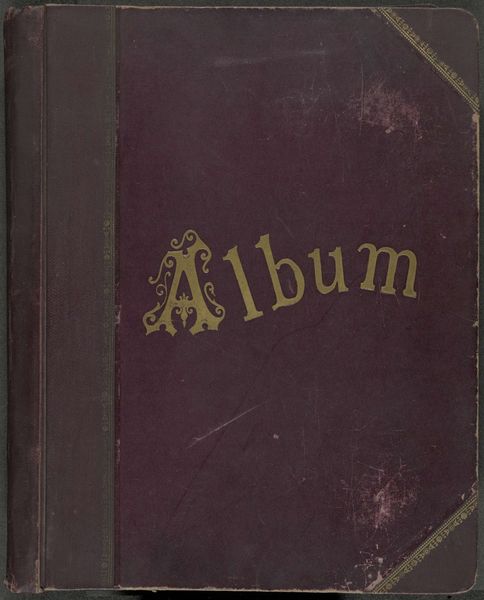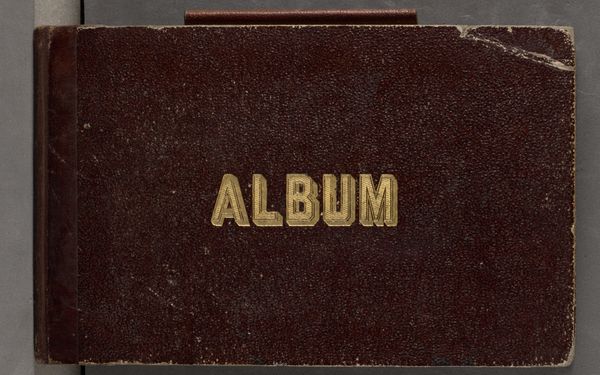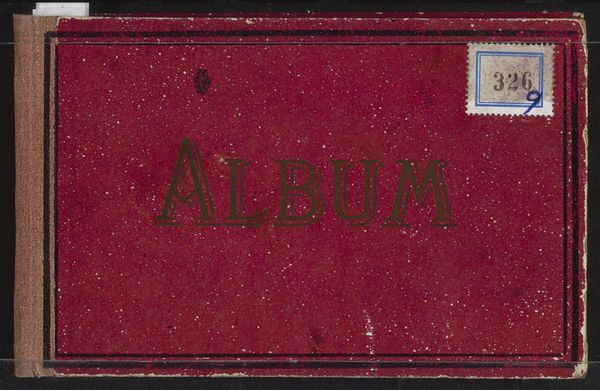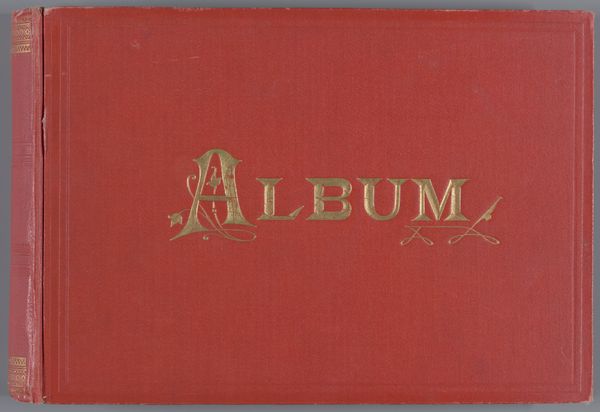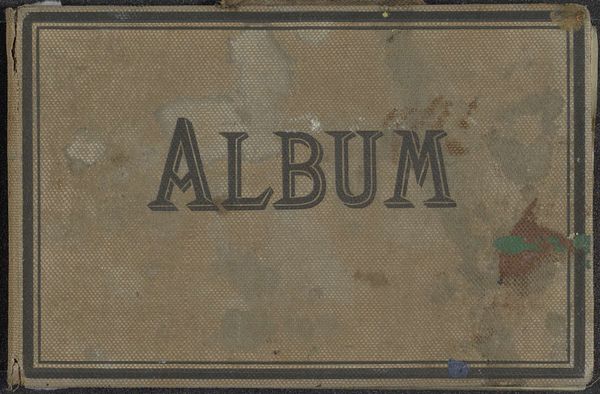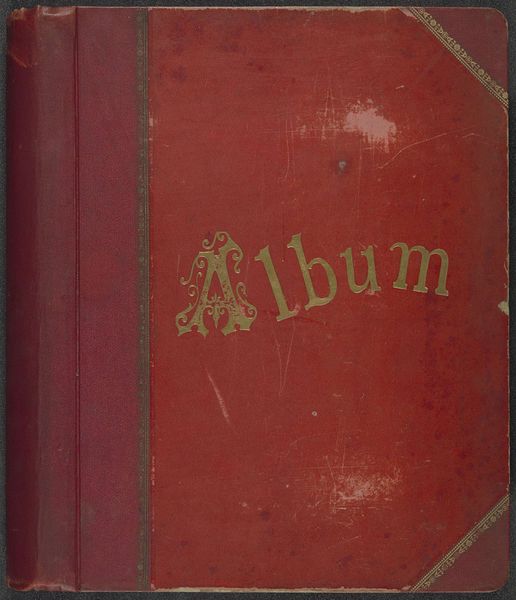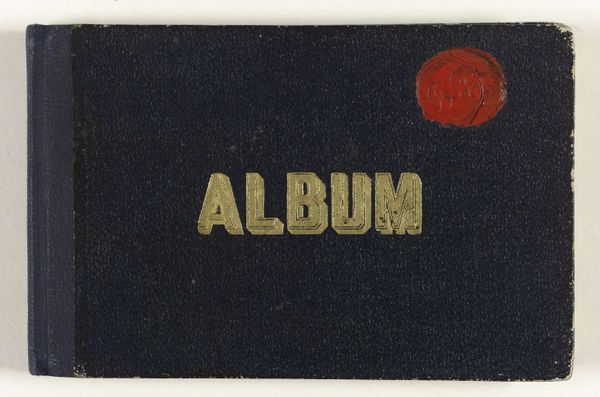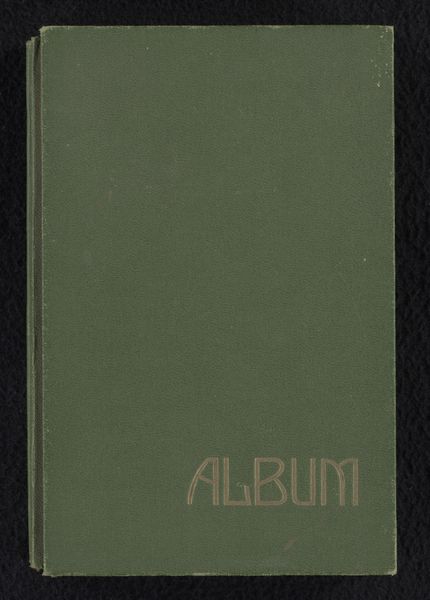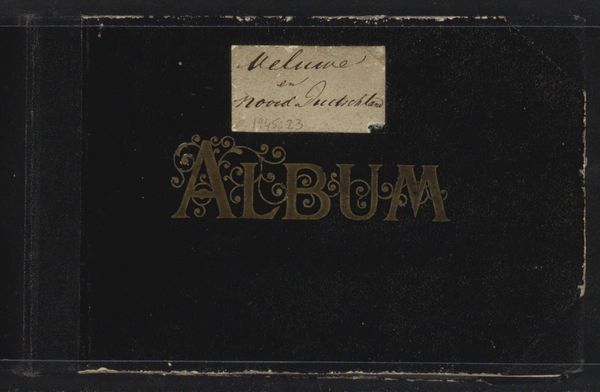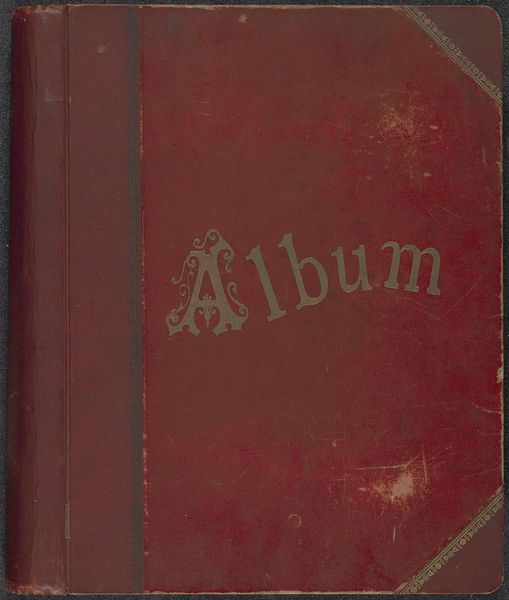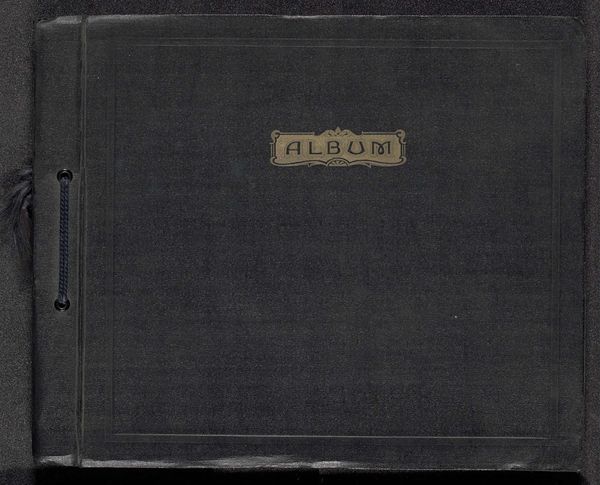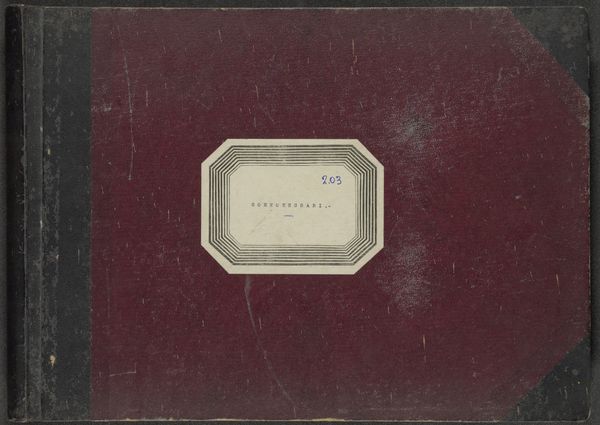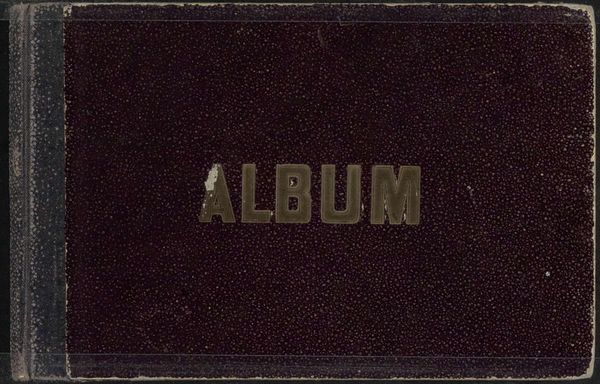
drawing, mixed-media, collage, paper, albumen-print
portrait
drawing
mixed-media
collage
self-portrait
paper
watercolour illustration
decorative-art
watercolor
albumen-print
Dimensions: height 283 mm, width 247 mm, thickness 50 mm, width 476 mm
Copyright: Rijks Museum: Open Domain
Curator: Welcome! We are looking at a captivating object from 1882 by Alexander Ver Huell, titled 'Album met 24 ingeplakte schetsen', which translates to 'Album with 24 Pasted Sketches.' It’s a mixed-media album containing drawings, albumen prints, watercolors and collage elements all bound within decorative boards. Editor: My first thought is the immediate visual pun - a beautiful album proclaiming itself a “Crap Album”! I’m struck by that immediate juxtaposition; this tension between self-deprecation and the evident skill involved in its construction. Curator: Yes! This “crap album” as you mentioned uses various paper stocks and binding techniques, reflecting on accessibility and use of accessible or repurposed material. It seems the creator playfully acknowledges the labor and expense involved in compiling such a personal collection, while simultaneously diminishing its artistic value, an interesting commentary for the time. Editor: I read that declaration also in connection to the larger late-19th-century phenomenon of "scrapbooks". Were they viewed differently for women versus men for instance? Also, in connection to the self-portrait that appears within, the "crap album" can become a way to consider masculinity and vulnerabilities of this era. It brings together all sorts of anxieties relating to the act of creative work and the gaze and display. Curator: That's insightful, especially when thinking about the class and gender constructs of that era, as amateur artwork and artistry was becoming more accessible, particularly to women, though often still relegated as craft rather than fine art. It suggests a blurring of boundaries. Huell presents what we would call 'low art' through refined 'high art' techniques, but through humor that renders it 'crap', disrupting class markers. The labor involved suggests this album was meant for more than just private enjoyment. Editor: And looking at its presentation, a decorative initial 'S' on the cover as though signaling an important, archival object… all under the label "Crap Album", what might that signify about what he *actually* thought about all of this work and effort? It creates this rich dialogue within itself about both skill and maybe personal doubt and how it plays into artistic legacies. Curator: Absolutely. It is also intriguing to contemplate whether that approach opens doors to a larger appreciation. This 'Crap Album,' despite its apparent deprecation, offers us insight into the dynamics of production, consumption, artistic expression and personal identity. It allows us a wider, materialist understanding of art in its historical setting. Editor: Right. The album encapsulates social ambivalence surrounding artistic labor and personal narratives in that specific moment in time, creating meaning and offering diverse understandings based on each one of our interpretations and positions when observing. Curator: A valuable paradox captured and creatively self-assessed. Editor: A very unique, clever find indeed!
Comments
No comments
Be the first to comment and join the conversation on the ultimate creative platform.
